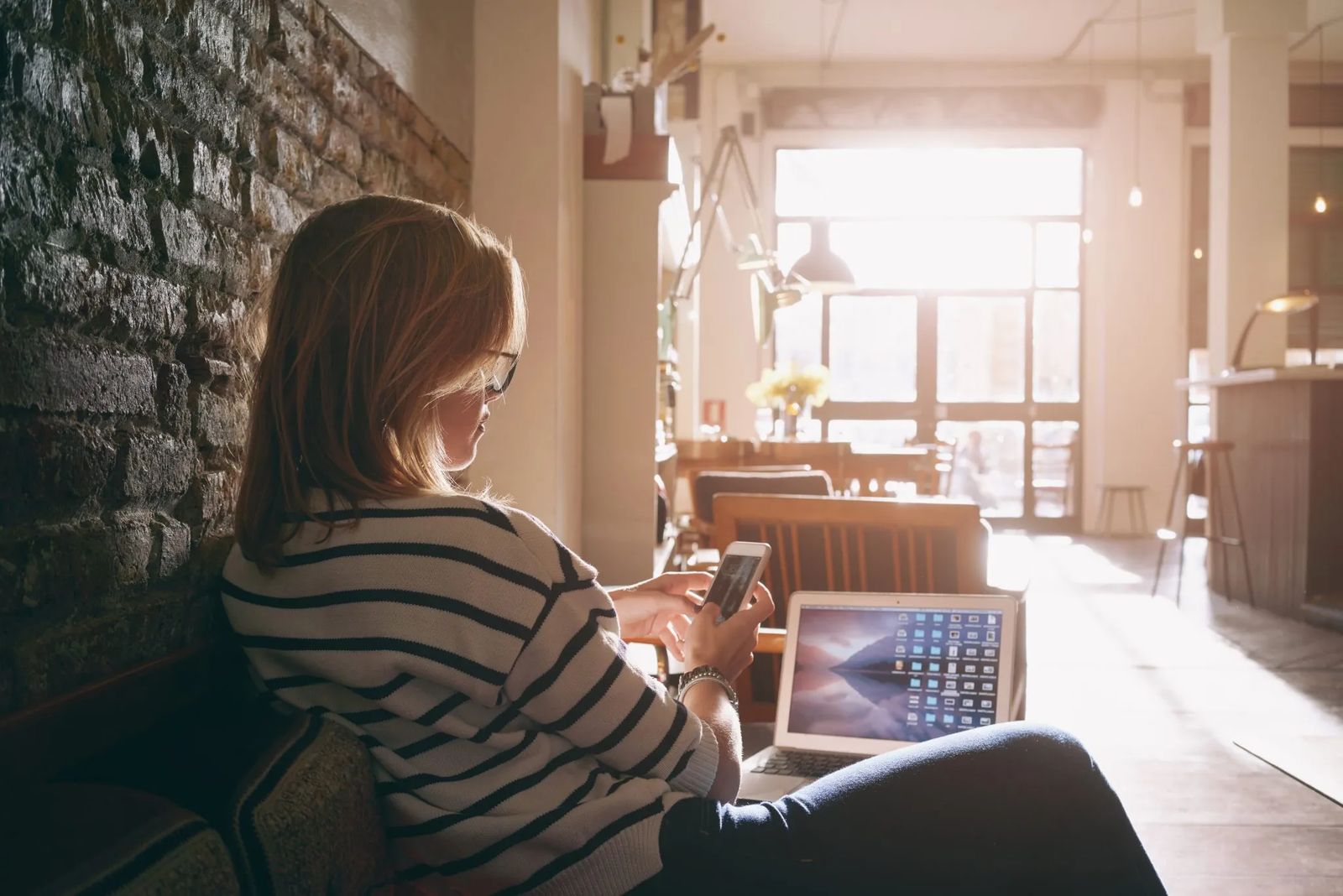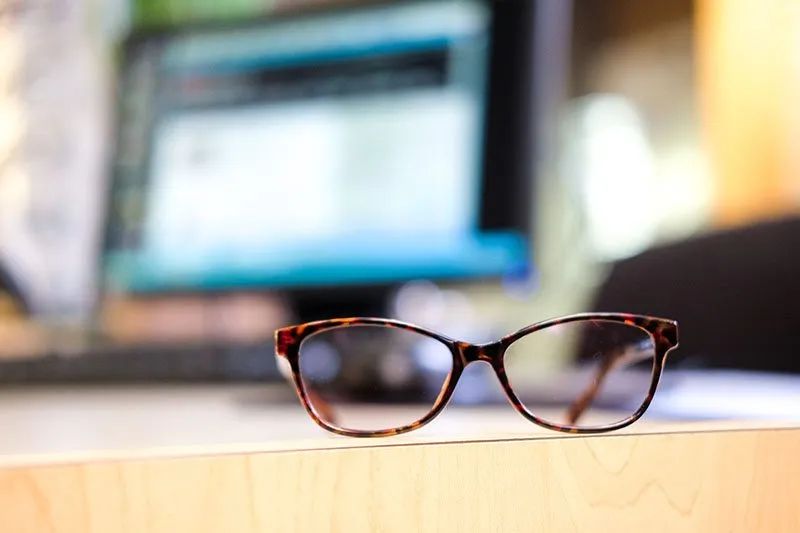
Feeling the Strain
The Sweeping Symptoms of Digital Eye Strain
Shari Hutch spends a good chunk of her day staring at her computer screen. As a para-optometric technician, it’s her job to pretest patients coming to Heights Eyecare before they sit down with their respective eye doctors. She’ll open patient files, add information, scroll, click, open new screens, and type. After going through these motions for several hours a day, her cell phone and TV both vie for her attention after hours.
The tech-heavy life was taking its toll on her eyes. By the end of the day, her eyelids were heavy and her eyes were downright tired.
“I remember coming home after work and feeling like I just couldn’t look at another thing. I couldn’t read a book. I didn’t want to watch TV. I really just wanted to sit and close my eyes,” Shari says.
The culprit was digital eye strain, also known as computer vision syndrome.
According to the American Optometric Association, digital eye strain has reached epidemic proportions. Thanks to our tech-savvy society, more than 83% of Americans claim to use digital devices for more than two hours a day. Sixty-one percent say they use two or more devices at a time. The result? More than 67% of Americans — from children on up — suffer the symptoms of digital eye strain.
“We have an eight hour work day and when you are on your digital device after work, it is easy to get in the zone and not take breaks,” Dr. Kelci Rolfstad, an optometrist with Heights Eyecare says. She sees the side effects daily in her office. “It’s a kind of ache or pain around the eyes. People report headaches and blurred vision, dry eyes and quite a bit of neck and shoulder pain as well.”

What’s more is the unknown damage that could be caused by the blue light emitted by all our devices. We know blue light can disrupt our circadian sleep rhythm if we look at our devices before bed. But, according to Dr. Rolfstad, that’s not the only potential threat. “Blue light can also penetrate into the back of the eye and potentially cause damage to the macular pigment over time. That would be the area from an eye health perspective that we are concerned with since it is the macula that provides your central detail vision.”
More than 67% of Americans — from children on up — suffer the symptoms of digital eye strain.
Doctors are also seeing teens with long distance issues because their eyes are becoming so fixated on the cell phone screen that’s just inches from their eyes.
“Oftentimes, teenagers are using a handheld device, which is held even closer to your face than your computer,” Dr. Rolfstad shares. “If you are looking up close for extended periods of time, you can have your focusing system get locked into that distance.” The result is blurry distance vision that takes time to recover.
Since the digital age isn’t going anywhere anytime soon, the next best thing is to schedule breaks from your devices during your day. Dr. Rolfstad calls it the 20-20-20 rule.
“Every 20 minutes you are on a computer or device, try to take 20 seconds to look out a window or look 20 feet into the distance to relax your eyes and reset the focus,” Dr. Rolfstad suggests.
Make a conscious effort to blink more often too. “When we look at our screens, it significantly reduces our blink rate,” says Dr. Rolfstad. “We can get a lot more dry eye symptoms if we have been on our computer all day.”
Over and above all the preventative tips, Dr. Rolfstad says it is important to let your eye doctor know when you are having issues (See sidebar, Easing the Strain). She says, there are solutions. “Often, I have patients who don’t wear glasses or contact lenses on a regular basis but they can benefit still from a prescription for computer use because it is a different visual demand than the rest of their day.” That, paired with breaks and proper desk ergonomics can go a long way to easing the strain.
For Shari Hutch, the answer was as simple as getting a blue light blocking progressive lens. It took her about two weeks to get used to the change but the results have been life-altering. “It definitely took some of that strain away,” she says. “I’m not tired. I can make it through the day and I feel like I can actually enjoy my evenings.”

THE PAINFUL EFFECTS OF DIGITAL EYE STRAIN
32.6% report eye aches
22.7% report dry eyes
22% report blurred vision
21.4% report headaches
30.8% report neck and shoulder pain
EASING THE STRAIN
What you can do to alleviate it
*Choose eyewear with blue light reducing capabilities. You can purchase these glasses without a prescription to serve as a filter.
*See if your devices have a blue light filter feature and use it.
*Get a comprehensive eye exam and let your doctor know if you suffer from digitally tired eyes.
*Follow the 20-20-20 rule. Take a 20-second break from the screen every 20 minutes and look at something 20 feet away to reset your focus.
*It is easier on your eyes if you match your screen brightness to the brightness of the room.
*Reduce overhead lighting to eliminate screen glare or, if you can, move your computer screen away from windows.
*Position yourself arm’s distance away from the screen and have your computer slightly below eye level.
*Increase font size on your devices to avoid squinting and straining.











